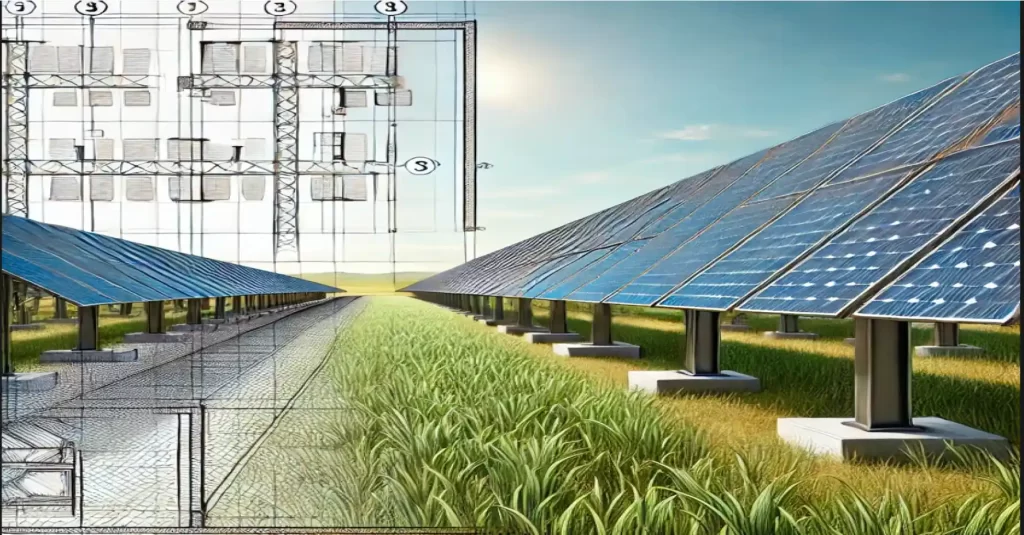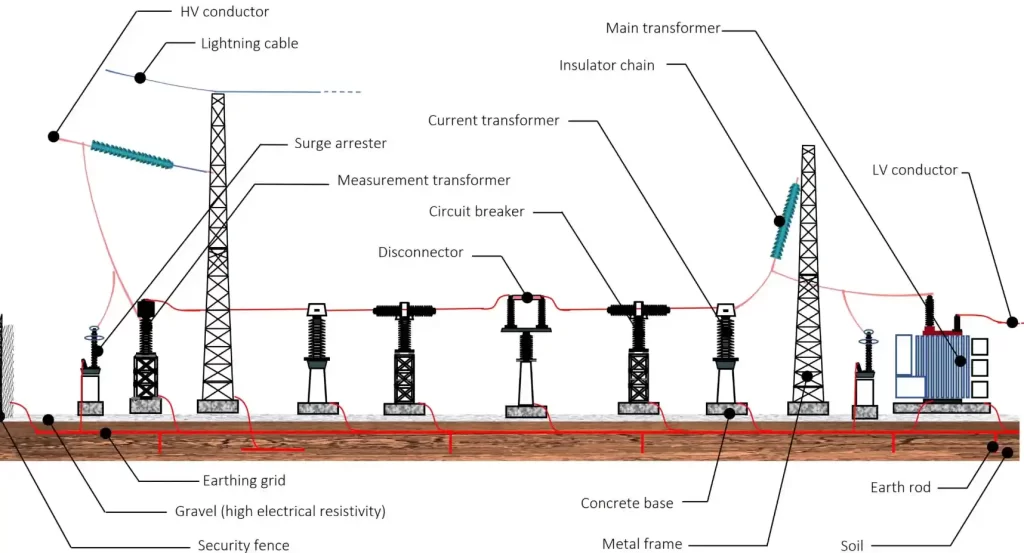- Concept de base : Qu'est-ce qu'une petite station ?
- Applications des petites sous-stations
- Tendances du marché et contexte
- Les spécifications techniques en un coup d'œil
- Petites et grandes sous-stations : Quelle est la différence ?
- Conseils d'achat : Comment choisir une petite sous-station
- Sources citées et recommandées
- Questions fréquemment posées
Concept de base : Qu'est-ce qu'une petite station ?
A petite sous-station-également connu sous le nom de sous-station compacte ou mini-sous-station-est une unité de distribution d'énergie entièrement intégrée qui comprend :
- Appareils de commutation à moyenne tension
- Transformateur de distribution
- Panneau basse tension
- Le tout est logé dans un boîtier résistant aux intempéries, assemblé en usine.
Ces sous-stations traitent généralement 100 kVA à 2500 kVA et d'opérer dans le cadre de Systèmes 11kV, 22kV ou 33kV. Leur conception compacte et prête à l'emploi permet une installation rapide et des travaux de génie civil minimes, ce qui les rend idéaux pour les zones urbaines et rurales à croissance rapide.
Applications des petites sous-stations
Les petites sous-stations sont largement utilisées dans :
- Bâtiments résidentiels et commerciaux
Abaissement de la tension jusqu'à 400 V pour un usage domestique ou professionnel - Sites industriels
Alimentation de machines à petite échelle ou d'unités de traitement locales - Usines de production d'énergie renouvelable
Servir de point d'interconnexion entre les parcs solaires ou éoliens et le réseau électrique. - Groupes électrogènes mobiles
Utilisé dans les mines, les champs pétrolifères et les projets de construction temporaires - Electrification rurale ou à distance
Fournir de l'électricité à des régions où l'expansion du réseau est limitée

Tendances du marché et contexte
Conformément à la IEEMA et AIE La demande de petites sous-stations augmente dans le monde entier en raison des rapports de la Commission européenne :
- Programmes d'urbanisation rapide et d'électrification rurale
- Croissance des installations solaires en toiture et des micro-réseaux
- Dépendance accrue à l'égard des systèmes énergétiques distribués
- Projets de développement de villes intelligentes
Les petites sous-stations, en particulier celles qui sont préfabriquées et montées sur patins, sont un élément clé de la stratégie de développement de l'UE. stratégies énergétiques décentraliséesL'énergie éolienne est une source d'énergie locale fiable qui ne nécessite pas l'installation de sous-stations à grande échelle.
Selon le Wikipedia (en anglais)Les sous-stations compactes s'inscrivent dans le cadre d'un effort plus large visant à améliorer l'efficacité énergétique et à réduire les pertes lors de la livraison sur le dernier kilomètre.
Les spécifications techniques en un coup d'œil
| Composant | Gamme / Valeur typique |
|---|---|
| Tension nominale | 11kV / 22kV / 33kV |
| Capacité du transformateur | 100 - 2500 kVA |
| LV Tension de sortie | 400V / 415V |
| Fréquence | 50Hz / 60Hz |
| Classe de protection | IP44 - IP65 |
| Type de boîtier | Extérieur de type kiosque ou bardage métallique |
| Type de refroidissement | Transformateur à bain d'huile ou à sec |
| Respect des normes | IEC 62271, IEC 60076, IEEE C57 |
Petites et grandes sous-stations : Quelle est la différence ?
| Fonctionnalité | Petite sous-station | Grande sous-station |
|---|---|---|
| Capacité de puissance | 100 - 2500 kVA | Au-dessus de 5000 kVA |
| Niveaux de tension | Jusqu'à 33kV | Jusqu'à 400 kV ou plus |
| Empreinte | Compact (1-3 m²) | Grande surface (plusieurs bâtiments) |
| Temps d'installation | 1-2 jours | Semaines ou mois |
| Applications | Distribution locale | Contrôle du réseau régional |
| Personnalisation | Limitée | Hautement personnalisable |

Conseils d'achat : Comment choisir une petite sous-station
Lors du choix d'une petite sous-station, il convient de prendre en compte les éléments suivants
- Exigence de charge : Déterminer la taille du transformateur en fonction de la charge de pointe (en kVA).
- L'environnement : Choisissez un boîtier avec un indice de protection IP54+ pour les zones poussiéreuses ou humides.
- Type de transformateur :
- Immergé dans l'huile: Plus efficace et plus rentable
- Type sec: Plus sûr à l'intérieur et pour les zones sensibles au feu
- Systèmes de protection : S'assurer que le tableau BT comprend des disjoncteurs, des parasurtenseurs et des compteurs.
- Mobilité : Pour une utilisation temporaire, les unités montées sur skid ou sur remorque sont idéales.
Des fournisseurs réputés tels que ABB, Schneider Electric, Siemenset des fabricants émergents tels que PINEELE offrent une large gamme de sous-stations compactes certifiées IEC/ANSI.
Sources citées et recommandées
- Série IEEE C57 - Normes relatives aux transformateurs
- Wikipédia : Poste électrique
- Postes secondaires compacts ABB
- Rapports de l'IEEMA - Développement des sous-stations en Inde
Questions fréquemment posées
A : Avec un entretien adéquat, les petites sous-stations peuvent durer de 25 à 30 ans, en fonction des conditions environnementales et de la qualité des composants.
A : Oui, ils sont couramment utilisés pour augmenter ou diminuer la tension dans les systèmes solaires photovoltaïques et sont idéaux pour les applications d'énergie hybride.
A : La plupart des unités sont assemblé en usine et livrés prêts à l'emploi. Ils sont placés à l'aide d'une grue et raccordés en quelques heures, ce qui minimise les travaux sur le site.
A petit guide des postes électriques est plus qu'une simple version miniature d'un centre d'alimentation conventionnel : c'est une solution extrêmement pratique, efficace et évolutive pour la distribution moderne de l'électricité. Qu'il s'agisse d'un lotissement, d'une ferme solaire ou d'un site industriel temporaire, les sous-stations compactes constituent l'épine dorsale des systèmes énergétiques locaux.
En comprenant les composants, les normes et les options de configuration, les ingénieurs et les décideurs peuvent choisir la bonne solution pour équilibrer les coûts, les performances et la fiabilité.


